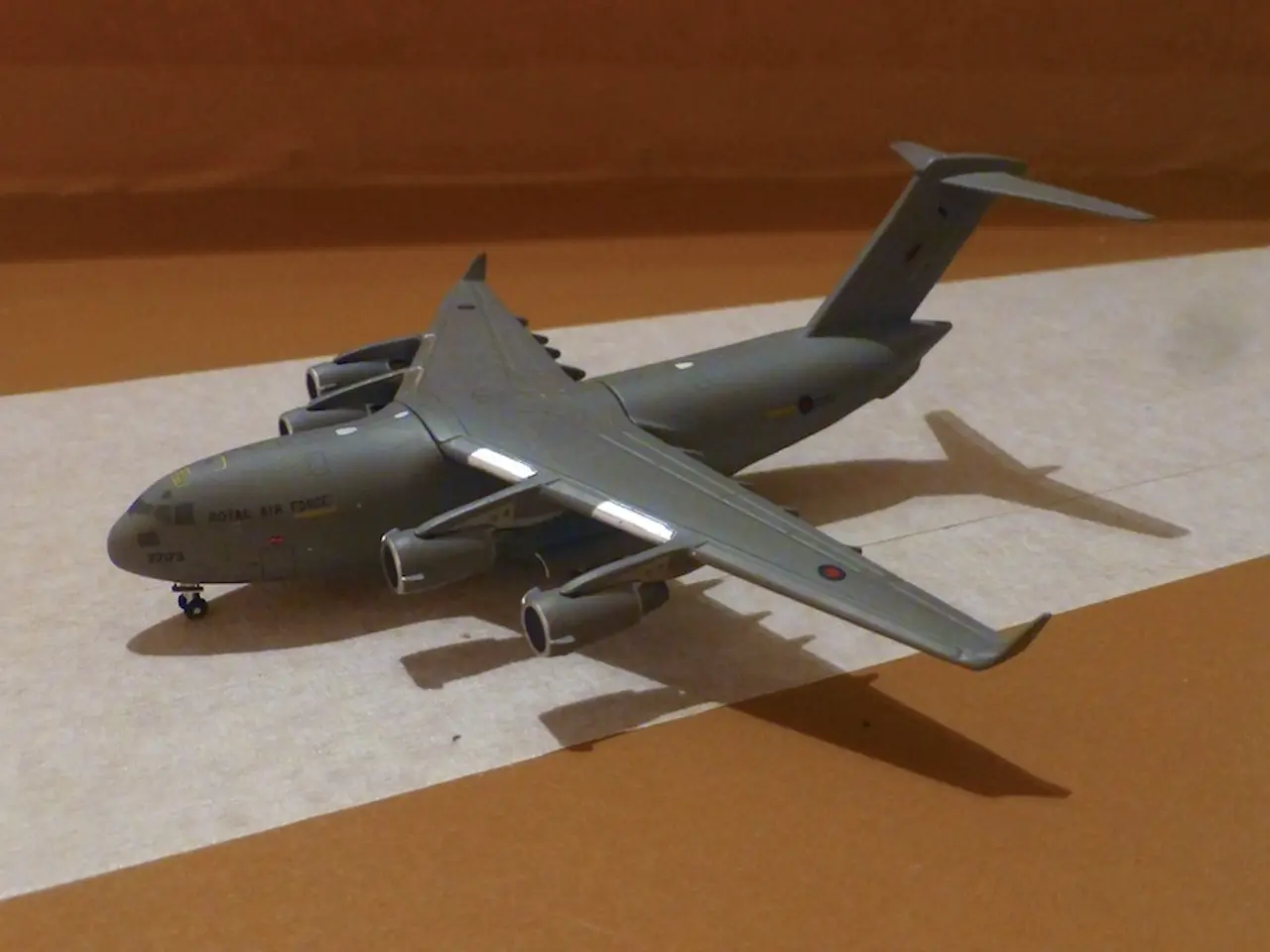U.S. Air Force Finances Innovation of External Pylons for B-1 Bomber, Aiming for Enhanced Weaponry and Hypersonic Trials
B-1B Bomber to See Significant Payload Increase with External Weapons Pylons
The United States Air Force is set to enhance the capabilities of its B-1B Lancer bomber fleet with the addition of new external weapons pylons. This development, part of the Air Force's Fiscal Year 2026 budget, could potentially double the number of standoff munitions the B-1B can carry.
The "External Heavy-Stores Pylon program," allocated over $50 million in the budget, aims to reopen and upgrade the aircraft's previously deactivated external hardpoints. Each pylon will now be capable of carrying payloads up to 5,000 pounds, thanks to the new pylons.
With these modifications, the B-1B could carry up to 12 external weapons along with about 24 internally. This could result in a potential load of up to 36 hypersonic or standoff missiles per aircraft, including next-generation weapons like the Hypersonic Attack Cruise Missile (HACM).
This expansion of the B-1B's capacity not only boosts its conventional strike capabilities but also expands the number of bombers available for hypersonic weapons flight testing. This is crucial for developing these advanced armaments ahead of the full B-21 deployment.
The Air Force sees this upgrade as a hedge against delays in the B-21 program and a way to sustain bomber force lethality and readiness throughout the transition. Boeing's Load Adaptable Modular (LAM) pylon could allow the B-1 to increase its current weapons payload capacity by 50%, capable of carrying larger and heavier weapons.
The LRASM, addressing an air-launch capability gap, provides flexible, long-range, advanced, anti-surface capability against high-threat maritime targets. The Air Force spent $20 million over fiscal years '22 and '23 to develop an external carry-enabled testbed for priority hypersonic weapons. Procurement of the latest version of the LRASM will start near the end of fiscal 2027 and continue until the missile inventory objective is met.
The increased volume of fires off the B-1B can be done in the near term, with the new pylons already undergoing testing under the 412th Test Wing at Edwards Air Force Base, Calif., using inert munitions. The program provides an opportunity for a significant risk reduction for an operational external carry capability on the B-1B if directed, specifically for the LRASM.
In essence, the new external pylons on the B-1B enable the Air Force to maintain and grow its bomber strike and hypersonic testing capabilities during the critical period before the stealthy B-21 Raider's operational arrival. This provides resilience in the bomber fleet's evolving mission sets and accelerates hypersonic weapon integration.
- The Space Force is contemplating integrating new hypersonic weapons, such as the HACM, onto the B-1B Lancer bomber, which could significantly enhance its conventional strike and hypersonic testing capabilities.
- With the addition of external pylons, the B-1B's capability to carry standoff munitions is expected to double, allowing it to potentially launch up to 36 hypersonic missiles per aircraft.
- The new pylons may also accommodate larger and heavier weapons, thanks to the adoption of Boeing's Load Adaptable Modular (LAM) pylon technology, potentially increasing the B-1B's total weapons payload capacity by 50%.
- The advancements in the B-1B's armament capabilities, funded by the Air Force's 2026 budget, serve as a protective measure against possible delays in the B-21 program and ensure the ongoing lethality and readiness of the air force and space force.




